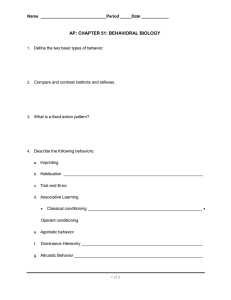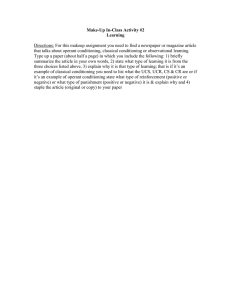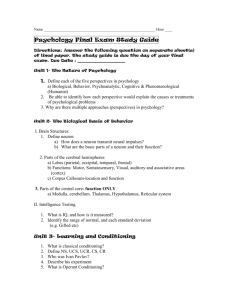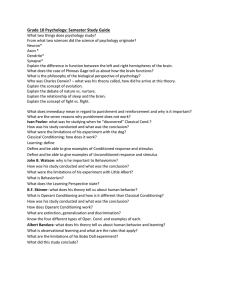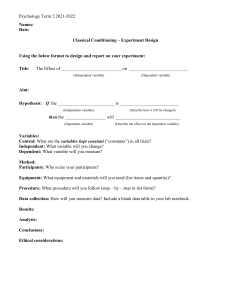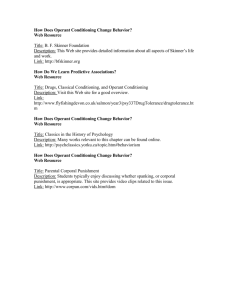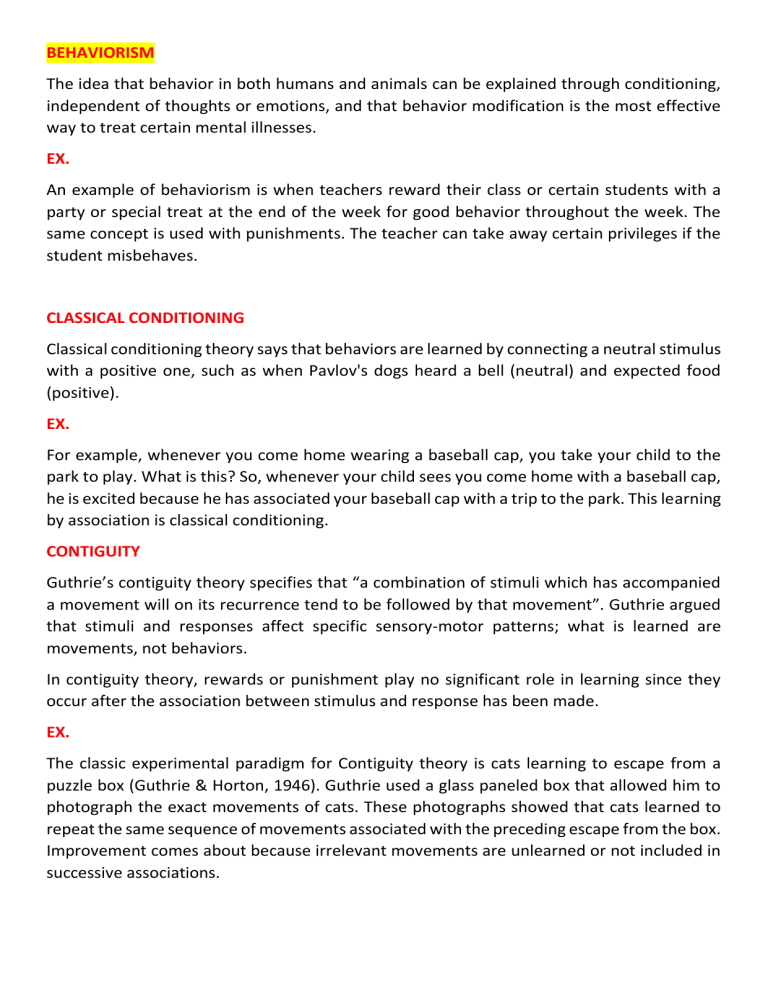
BEHAVIORISM The idea that behavior in both humans and animals can be explained through conditioning, independent of thoughts or emotions, and that behavior modification is the most effective way to treat certain mental illnesses. EX. An example of behaviorism is when teachers reward their class or certain students with a party or special treat at the end of the week for good behavior throughout the week. The same concept is used with punishments. The teacher can take away certain privileges if the student misbehaves. CLASSICAL CONDITIONING Classical conditioning theory says that behaviors are learned by connecting a neutral stimulus with a positive one, such as when Pavlov's dogs heard a bell (neutral) and expected food (positive). EX. For example, whenever you come home wearing a baseball cap, you take your child to the park to play. What is this? So, whenever your child sees you come home with a baseball cap, he is excited because he has associated your baseball cap with a trip to the park. This learning by association is classical conditioning. CONTIGUITY Guthrie’s contiguity theory specifies that “a combination of stimuli which has accompanied a movement will on its recurrence tend to be followed by that movement”. Guthrie argued that stimuli and responses affect specific sensory-motor patterns; what is learned are movements, not behaviors. In contiguity theory, rewards or punishment play no significant role in learning since they occur after the association between stimulus and response has been made. EX. The classic experimental paradigm for Contiguity theory is cats learning to escape from a puzzle box (Guthrie & Horton, 1946). Guthrie used a glass paneled box that allowed him to photograph the exact movements of cats. These photographs showed that cats learned to repeat the same sequence of movements associated with the preceding escape from the box. Improvement comes about because irrelevant movements are unlearned or not included in successive associations. OPERANT Operant conditioning, sometimes referred to as instrumental conditioning, is a method of learning that employs rewards and punishments for behavior. Through operant conditioning, an association is made between a behavior and a consequence (whether negative or positive) for that behavior. Operant behavior is that which is said to meet two conditions: (1) It is freely emitted by an animal, in the sense that there is no obvious triggering stimulus. (2) It is susceptible to reinforcement and punishment by its consequences, such that it can be caused to go up or down in frequency, respectively. EX. For example, when lab rats press a lever when a green light is on, they receive a food pellet as a reward. When they press the lever when a red light is on, they receive a mild electric shock. As a result, they learn to press the lever when the green light is on and avoid the red light. But operant conditioning is not just something that takes place in experimental settings while training lab animals. It also plays a powerful role in everyday learning. Reinforcement and punishment take place in natural settings all the time, as well as in more structured settings such as classrooms or therapy sessions. 2. COGNITIVE DEVELOPMENT PSYCHOLOGY Cognitive development means how children think, explore and figure things out. It is the development of knowledge, skills, problem solving and dispositions, which help children to think about and understand the world around them. Brain development is part of cognitive development. 3. COGNITIVE FIELD PSYCHOLOGY Cognitive psychology is the branch of psychology dedicated to studying how people think. The cognitive perspective in psychology focuses on how the interactions of thinking, emotion, creativity, and problem-solving abilities affect how and why you think the way you do. SLOGAN If something cannot be convincingly justified in terms of the future, it should not be taught in the curriculum.

